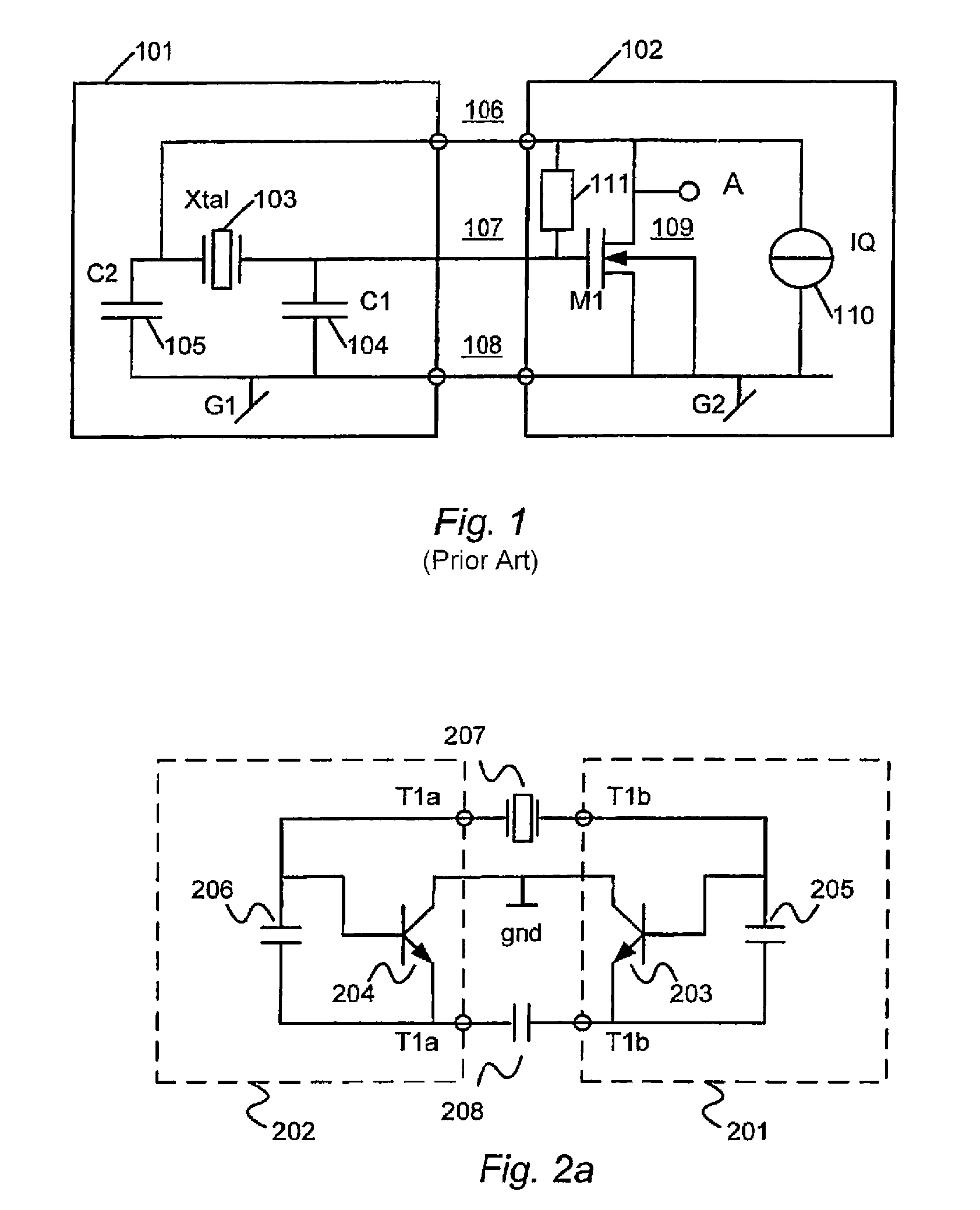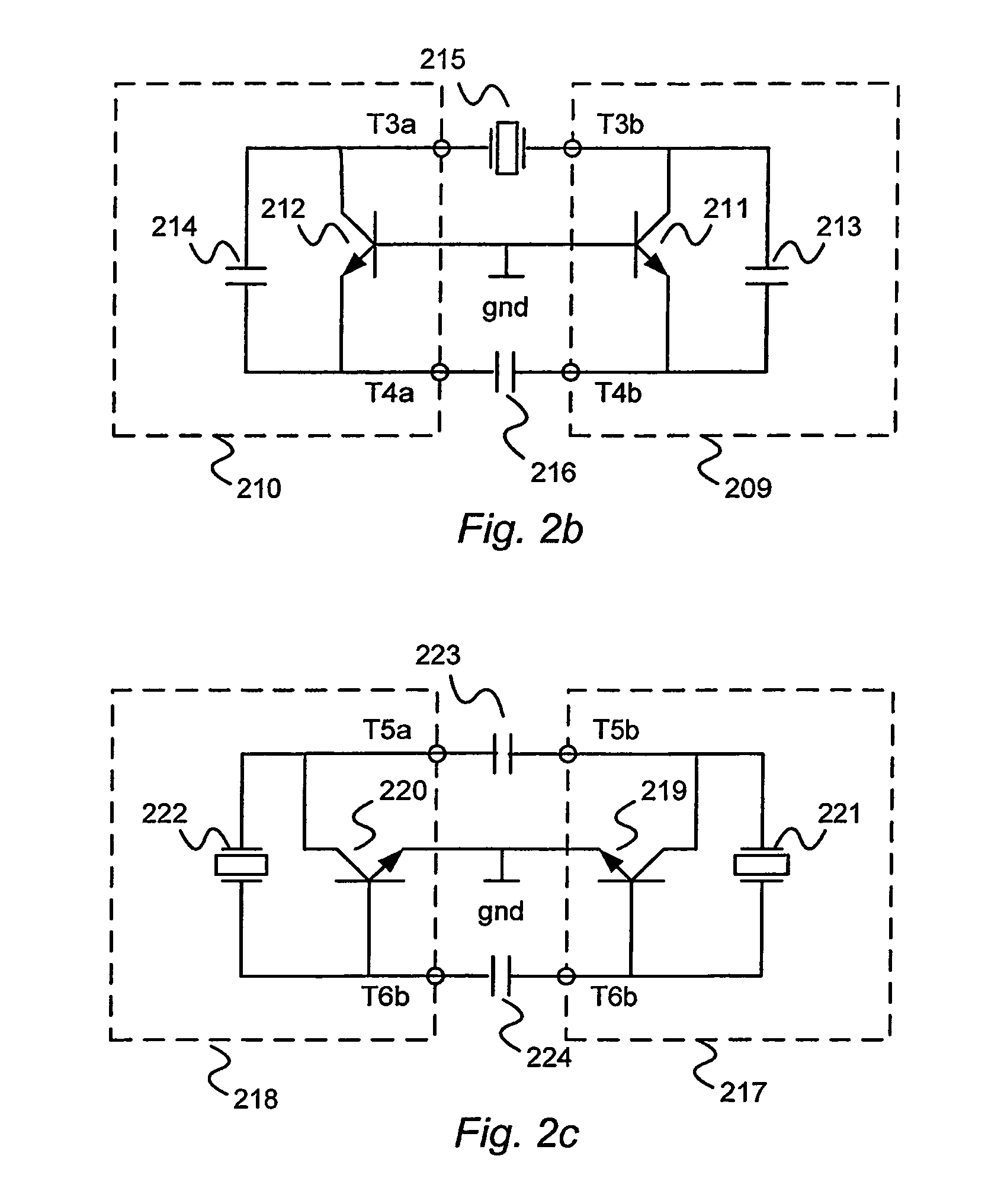Oscillator and an integrated circuit
a technology of integrated circuits and oscillators, which is applied in the direction of oscillator generators, electrical equipment, etc., can solve the problems of noise and interference injection into the core of the oscillator, the damage of interference components, and the serious problem of large digital chips in the grounding of the oscillator, so as to achieve easy bias
- Summary
- Abstract
- Description
- Claims
- Application Information
AI Technical Summary
Benefits of technology
Problems solved by technology
Method used
Image
Examples
Embodiment Construction
[0048]FIG. 1 shows a single-ended crystal oscillator. The oscillator circuit is illustrated to comprise a first and a second subcircuit. The first subcircuit 101 is typically implemented by means of passive components mounted on a printed circuit board (PCB), whereas the second subcircuit 102 is implemented on a substrate in an integrated circuit (IC) component that is mounted on the PCB.
[0049]The first subcircuit 101 comprises an oscillating device in the form of a crystal (Xtal) 103 for instance with a nominal oscillating frequency in the range of 10-40 MHz. The crystal is electrically connected to the second subcircuit 102 by means of two connectors 106 and 107.
[0050]At frequencies about the nominal series resonance frequency the crystal has relatively low impedance. However, at frequencies below and above the series resonance frequency the crystal has relatively high impedance. Thus, below and especially above the nominal frequency an oscillating signal across the crystal will b...
PUM
 Login to View More
Login to View More Abstract
Description
Claims
Application Information
 Login to View More
Login to View More - R&D
- Intellectual Property
- Life Sciences
- Materials
- Tech Scout
- Unparalleled Data Quality
- Higher Quality Content
- 60% Fewer Hallucinations
Browse by: Latest US Patents, China's latest patents, Technical Efficacy Thesaurus, Application Domain, Technology Topic, Popular Technical Reports.
© 2025 PatSnap. All rights reserved.Legal|Privacy policy|Modern Slavery Act Transparency Statement|Sitemap|About US| Contact US: help@patsnap.com



